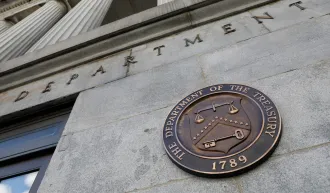Removing Barriers for Clean Tech Energy Entrepreneurs
A Stanford GSB forum raises ideas to streamline permit processes and global supply chain challenges faced by fledgling clean energy firms.
April 01, 2011
Streamlining balky government permit processes or convoluted global supply chains are just some of the challenges in the “Valley of Death” faced by fledgling clean energy firms.
Ideas of how to overcome these and similar barriers were tossed around in a forum with U.S. Chief Technology Officer Aneesh Chopra and Acting Under Secretary of Energy Arun Majumdar plus dozens of ambitious Bay Area cleantech visionaries and Stanford University student-entrepreneurs at a March 25 town hall event at Stanford University.
With President Barack Obama looking for ways to “unleash a new wave of clean tech innovation through entrepreneurship ? today is a terrific time to be a clean energy entrepreneur,” Chopra told approximately 100 people who attended the event, sponsored by Stanford’s Steyer-Taylor Center for Energy Policy and Finance and held at the Stanford Law School. The center, directed by Dan Reicher, is a joint initiative of Stanford GSB and the law school.
Chopra and Majumdar outlined the major challenge the country faces: how to quickly develop energy alternatives that will create domestic jobs while freeing the United States from spending $400 billion a day importing oil from unstable areas of the world.
The country’s “national security, economic security, and environmental security” are at stake, said Majumdar, a mechanical engineer who is the first director of the U.S. Department of Energy’s Advanced Research Projects Agency-Energy, also known as ARPA-E. “What we do in the next 10 to 20 years is absolutely critical.”
Innovations in energy technology, an effort championed by ARPA-E, will be key to ensuring security in all three of these areas for future generations, Majumdar added. Founded in 2009, ARPA-E supports high-risk, high-payoff technologies that promise to transform the energy landscape.
One of the potential products funded by ARPA-E is a longer-range, but lower-cost, electric battery capable of powering a car over much longer distances more cheaply than is possible today. Several other battery prototypes now under development are also drawing ARPA-E’s financial help. “We don’t know which one’s going to win in the future, but you’ve got to take a shot,” Majumdar said. “You learn from failure. That’s how innovation happens.”
Part of the president’s goal, Chopra said, is also to examine policies that often turn into “regulatory bottlenecks” that impede growth of small energy-focused entrepreneurs. He urged the crowd to share their views about barriers that are getting in the way of their entrepreneurial ventures on government website reducingbarriers.ideascale.com.
The pair then turned the floor over to lines of people who stood patiently at two microphones in the room, eager to give their perspectives on what needed to be done.
How to get enough funding to carry their ideas past “the Valley of Death” startups encounter as they move ideas from the drawing board to widespread adoption concerned several speakers.
One lamented that a pullback in federal financing stalled Berkeley’s Property Assessed Clean Energy pilot program, which allowed homeowners to borrow money to pay for efficiency upgrades for their homes and repay the cost through their own property tax bills over 20 years. The alternative financing method was an important incentive because many energy-efficiency upgrades are costly, yet the average homeowner sells a home after roughly seven years.
One speaker from solar startup Alta Devices of Santa Clara outlined endemic supply chain holdups because the raw materials and precision instruments essential to making their products come from Asia and Europe. “How can we as a country address the supply chain and access to all the critical materials and machines we need to make solar work in this country?” he asked.
A member of the student-led Stanford Energy Club wanted to know whether the Obama Administration would ensure that highly trained foreign students could stay and work in this country after earning PhDs. “We obviously support provisions that are encouraging the best and brightest to stay,” Chopra said, adding that the president will address the issue “in the near future.”
A representative from national nonprofit consortium SolarTech said he wished local governments would set uniform standards for companies to meet, since having thousands of different jurisdictions, each with its own requirement, “doesn’t get us where we want to be.”
Majumdar could relate. A recent survey found that a solar installation took only two days in San Jose but nine months in New York. “We are now going to create a competition around the nation to see how you can reduce this permitting and installation time,” Majumdar said.
While only certain groups win funding from ARPA-E, Majumdar said the organization highlights many startups on its website and introduces those young companies to investors, federal and state agencies, and other entrepreneurs.
“It’s not just that we want the ARPA-E technologies to win,” he said. “We want the nation to win. It’s the ecosystem that needs to win.”
For media inquiries, visit the Newsroom.
Explore More

New Incentives Could Save the Colorado River — and Other Threatened Waterways

Everlane Takes On Fashion’s Plastic Problem



